The Art of Corn Harvesting
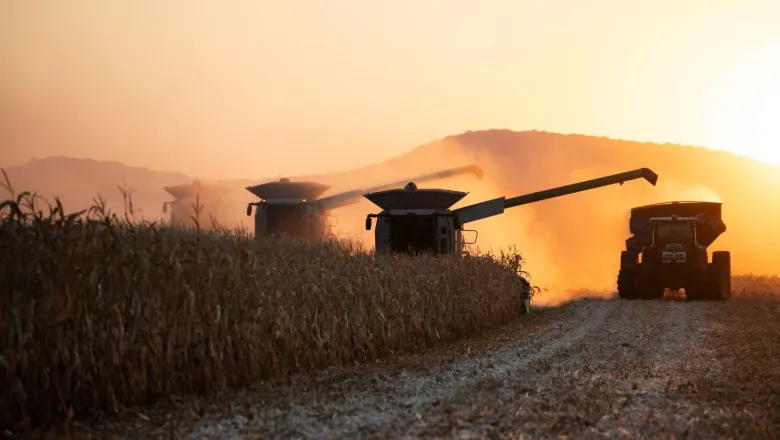
Educator Resources
The fall corn harvest was and is one of my most favorite times of year. The acres of young seedlings have grown tall and are now reaching the optimum point of harvest as either forage for livestock or grain for a nearly unlimited list of uses.
Corn is an interesting plant in that it does not exist “in the wild.” Corn is a 100% man-made plant and its breeding stretches back over 8000 years. From its humble beginnings, corn has evolved into the world’s leading crop for two reasons. First, corn produces more total nutrients per acre than any other crop and second, corn is easily mechanized.
As we enter into the harvest season and examine the methods and machinery used to harvest corn, we note that how the corn is to be used directly impacts how it is harvested. As I mentioned earlier, corn can be used as a forage crop. Corn silage can be utilized by ruminants, namely cattle as a source of energy and fiber.
Corn silage is made by chopping the entire plant into pieces approximately 3/8” long. This is accomplished by using a forage harvester, commonly called a “chopper” in farming circles. Choppers can be either pulled by a tractor as seen in the photo or be self-propelled. Many modern choppers have kernel processors that crush the corn grain for more efficient use by the animal. In those cases, particle lengths are generally increased to ¾ inches.
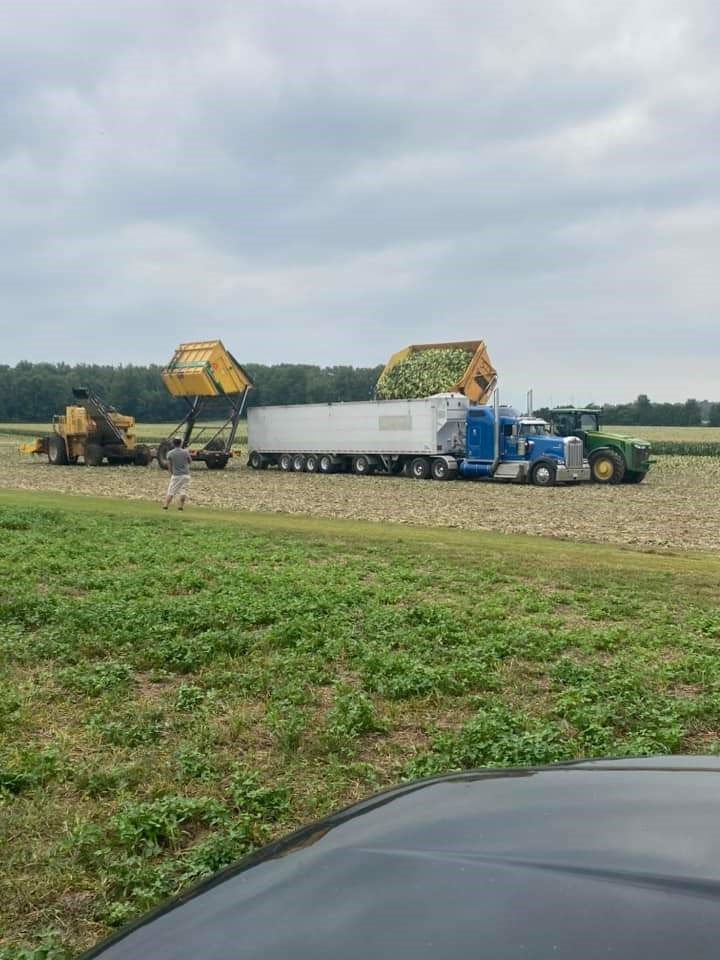
Image Credit: Tim Malin and IH Group on Facebook
Regardless of its method of propulsion, the corn crop is clipped a few inches above the ground and fed into a spool of blades (knives) capable of making over 200 cuts per second. The blades clip the incoming corn by using a stationary shear bar that give the blades a scissor action, delivering a clean, power-efficient cut.
 Image credit: Tim Malin and IH Group on Facebook
Image credit: Tim Malin and IH Group on Facebook
The freshly cut silage is placed and packed in a silo where it will undergo a fermentation process that allows the forage to be stored and fed over the course of the next year. Silos can be vertical towers, and silage can be placed into long plastic bags but the most used method is to pile the silage into horizontal bunkers, where the forage is spread and packed by heavy equipment or large tractors.
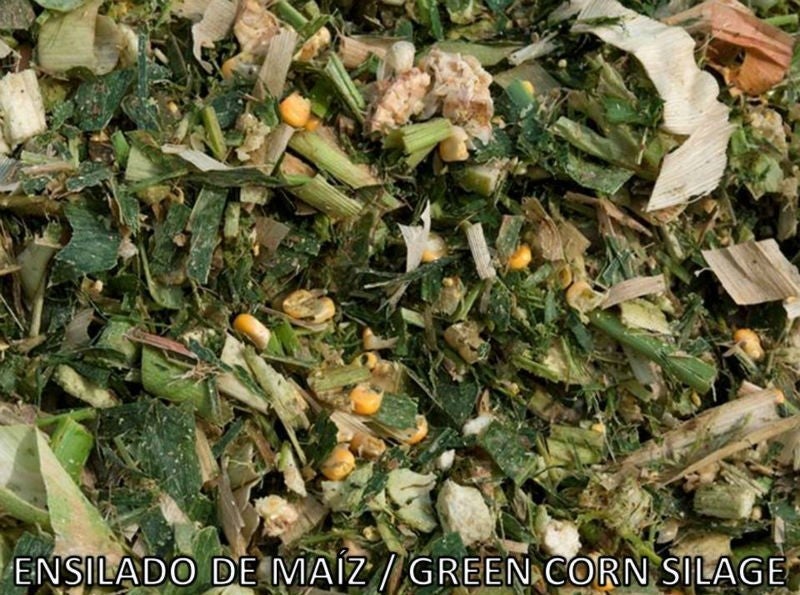 Image Credit: Dr. Gonzalo Ferreira, VA Tech
Image Credit: Dr. Gonzalo Ferreira, VA Tech
Bunkers offer quick feed out that is critical to today’s larger animal feeding operations. More rarely, corn can be processed as “snaplage,” using the same chopper with a snapper head that plucks the ear off the stalk and processes it as a more energy dense feed.
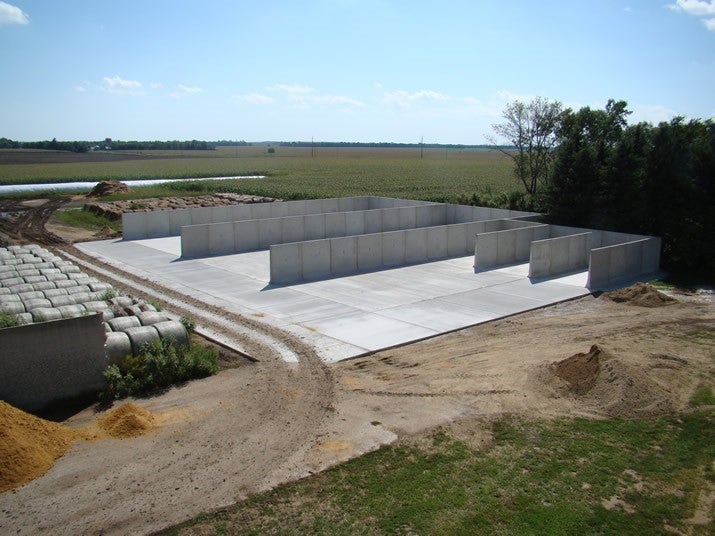 Image credit: Dr. Gonzalo Ferreira, VA Tech
Image credit: Dr. Gonzalo Ferreira, VA Tech
Corn harvested for grain is snapped off the stalk as well, but from that point forward, the grain is treated much more gently. The corn plant is generally drier at harvest and the possibilities of shattered kernels is higher. No matter the use, a broken kernel means the corn is worth less, and while zero breakage is not a reality, keeping damage to a minimum makes economic sense.
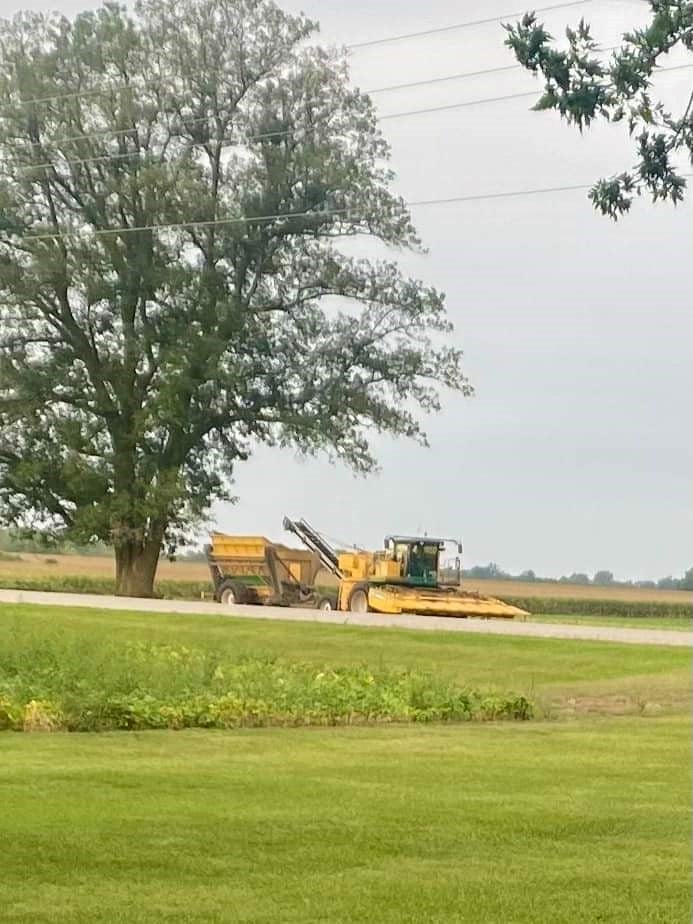 Image credit: Tim Malin and IH Group on Facebook
Image credit: Tim Malin and IH Group on Facebook
Again, the way the corn is to be used has a direct bearing on the machinery used to harvest it. Some corn is harvested by collecting the entire ear. Examples of corn harvested in this way include sweet corn (What’s corn on the cob without the cob?), popcorn and seed corn.
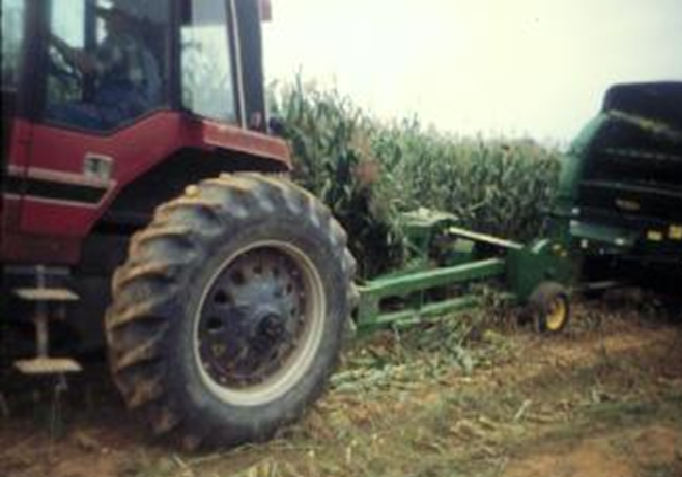 Image Credit: Andrew Overbay
Image Credit: Andrew Overbay
Machines that harvest these crops are called pickers and can range from antique tractor mounted units, to pickers pulled by tractors to large self-propelled pickers.
Even though popcorn and seed corn do not utilize the cob in their final form, this method allows the corn to be handled in the most-gentle way possible, again because kernel breakage makes the harvest worthless in both cases.
Seed corn is a highly prized crop. As we mentioned at the start of this blog, corn is an entirely man-made crop and seed corn represents the future of the next crop of corn. Hundreds of millions of dollars are invested in each new variety of corn, so the seed corn crop is precious in many ways.
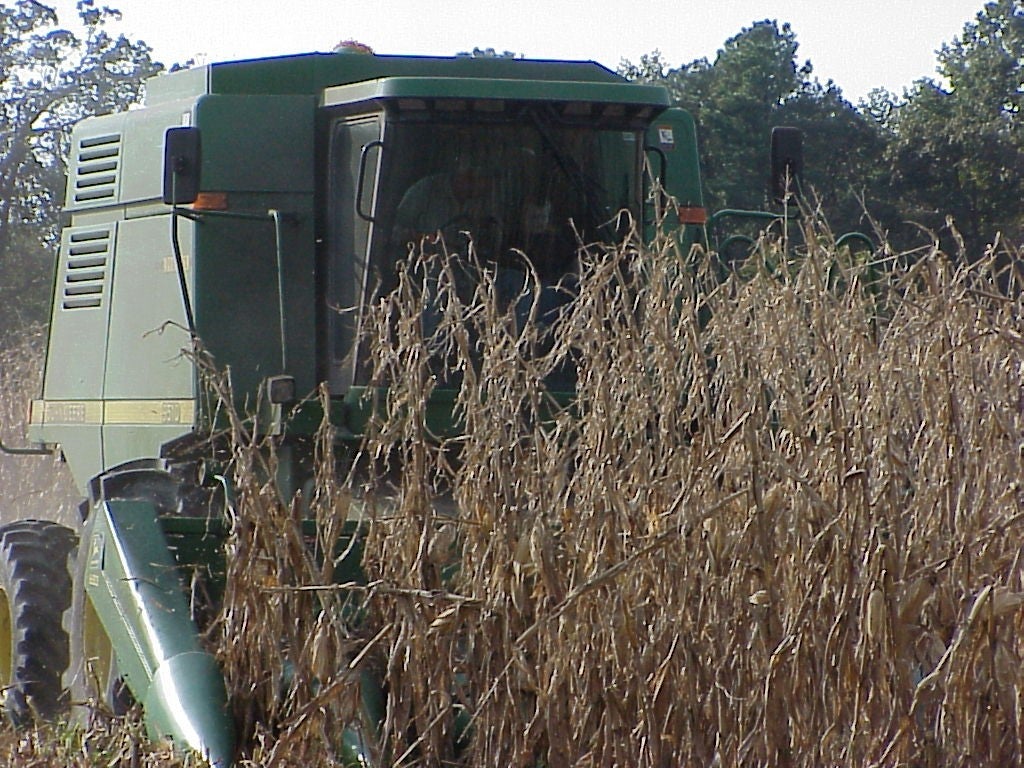 Image credit: Scott Reiter, Extension Agent, King George County VA
Image credit: Scott Reiter, Extension Agent, King George County VA
Seed corn production is highly monitored especially in the pollination phase. Corn is de-tasseled to ensure only the intended plant breeding occurs and then the male plants are destroyed. Only the female plants are harvested (male ears are very much larger and are sorted out if harvested) and the ears are de-husked and placed in driers as soon as they reach the seed processing facility.
Once the seed corn is dried, the ears are shelled and the kernels are bagged or boxed to be ready to go the field next spring.
Finally, when most people think of harvesting corn, the corn combine comes to mind. Combines can be used to harvest other crops like small grains (wheat, barley, rye) or soybeans. The front of the combine that first comes in contact with the crop is called the “header” and corn heads differ from other crops significantly.
Corn heads feature snouts, long pieces of metal or plastic that extend into the crop between the rows. Like pickers, the head snaps the ear off and expels the stalk and leaves. Unlike pickers, the ears are directed into a rotor via the combines feeder house. The rotor places the ears against the cage and the other ears and the kernels fall through the holes in the cage while the cobs and other larger pieces of material are chopped and expelled.
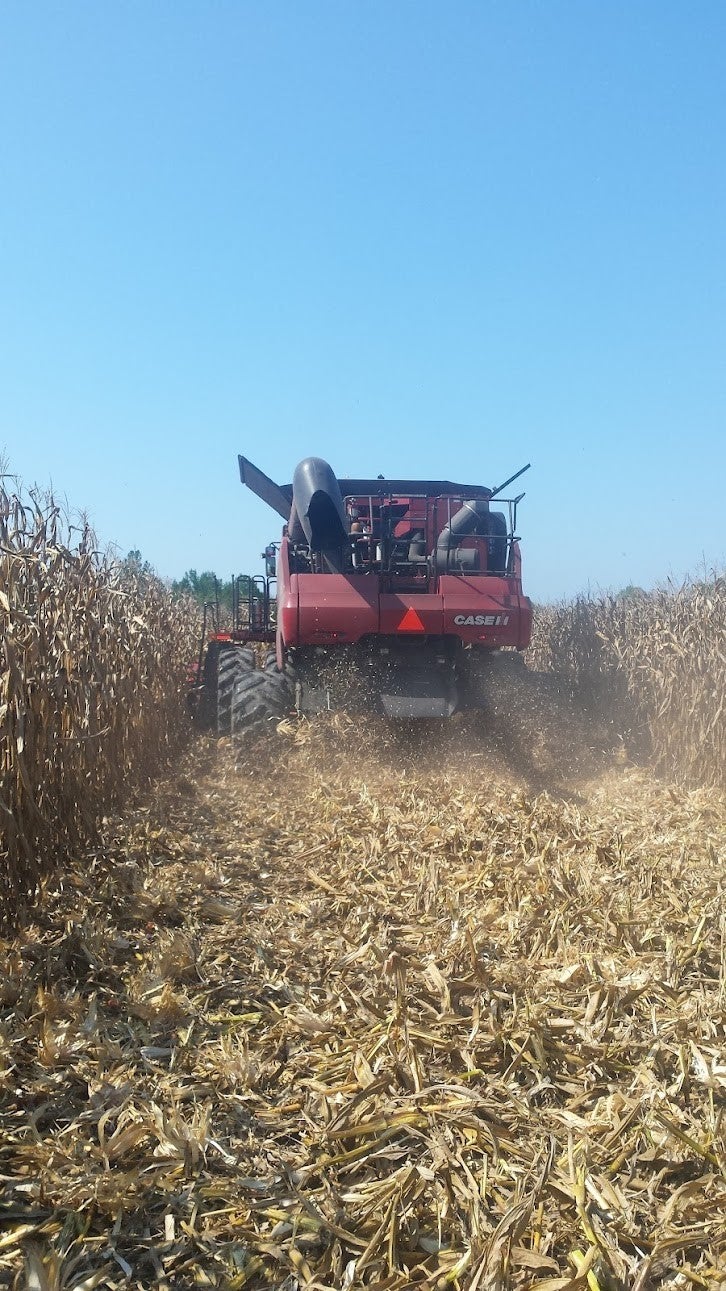 Image credit: Scott Reiter, Extension Agent, King George County VA
Image credit: Scott Reiter, Extension Agent, King George County VA
The kernels and some foreign material run through a shaker and then subjected to blasts of air from a high-speed fan. The shaking and air blasts serves to further “clean” the grain. The grain is collected in the combine’s large bin until it is unloaded into a truck, or large cart which will unload into a truck, for the trip to the local grain elevator or farm storage bins.
From there, the shelled corn is graded and its use is determined based the absence of foreign material and broken kernels. Those uses can range from animal feed to ethanol to corn syrup for your favorite carbonated beverage to binders to hold medications together.
No matter the use, a dark green field of growing corn is a beautiful sight and the life blood of many of our farms and industries.
Download the From Seed to Feed - The Planting and Harvesting of Corn
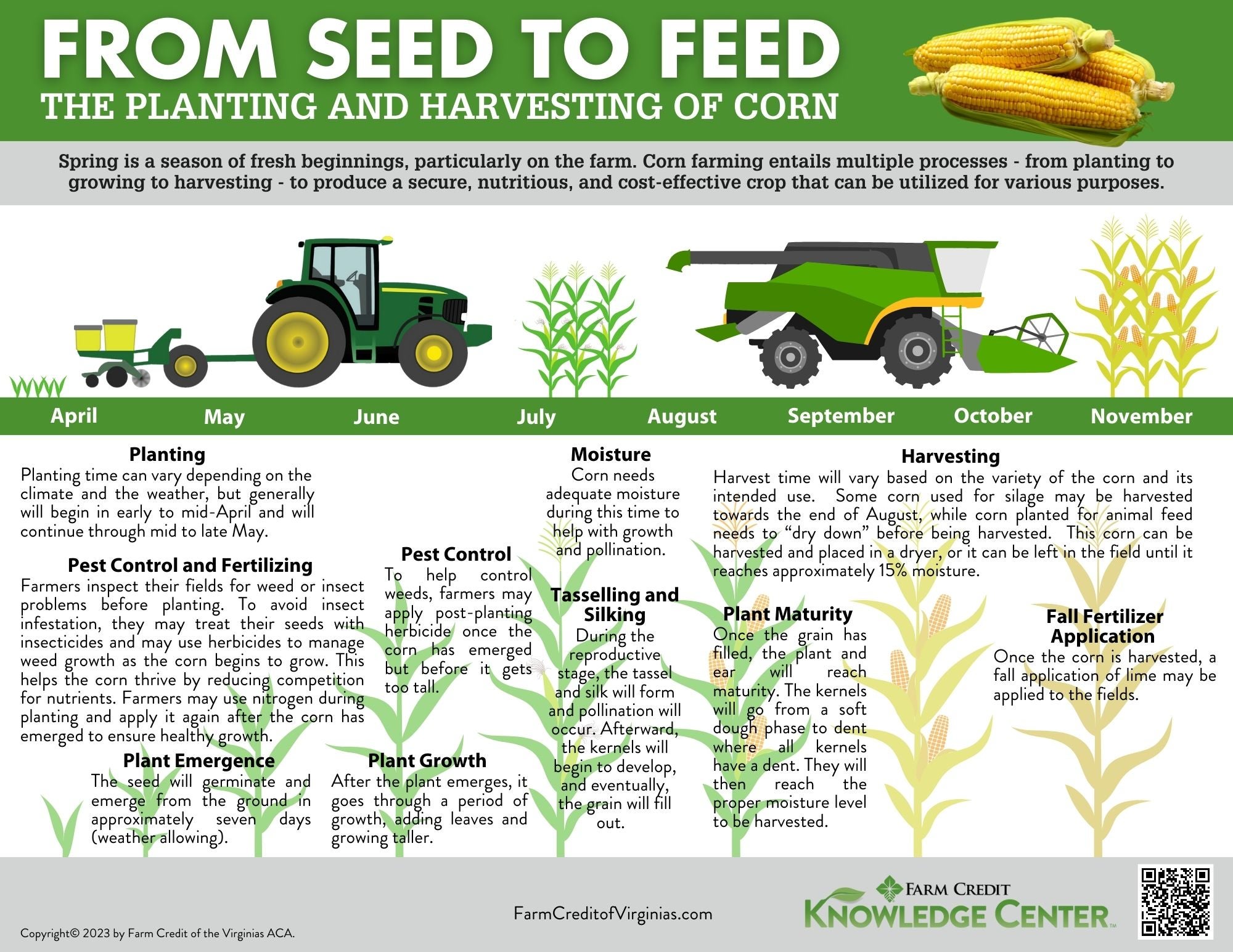
Author
Andrew Overbay, Unit Coordinator and Extension Agent, Agriculture and Natural Resources, Virginia Tech